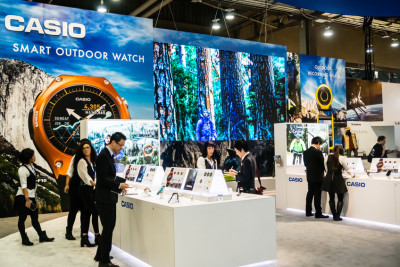 One thing B2B brands can agree on is that trade shows still are a very valuable investment. So valuable, in fact, that the average B2B brand invests nearly 40% of its total marketing spend on them. With so much money spent annually on a single marketing initiative, it makes sense to ensure your marketing investment is capable of delivering the expected ROI.
One thing B2B brands can agree on is that trade shows still are a very valuable investment. So valuable, in fact, that the average B2B brand invests nearly 40% of its total marketing spend on them. With so much money spent annually on a single marketing initiative, it makes sense to ensure your marketing investment is capable of delivering the expected ROI.In our white paper, “Your Roadmap to B2B Trade Show Success,” we provide a foolproof method for planning and executing your next trade show marketing initiative.
To give you a flavor of the white paper, we have included a brief list of some of the topics addressed:
Picking the right trade show
Do you go all in and set up a booth at the biggest — and most expensive — trade show for your industry or try one that has less attendance but will involve less financial risk? Deciding which trade show is right for your budget and growth ambitions will go a long way toward ensuring you get the healthy return on investment you seek.
Budget
You should always set up a budget for your trade show initiative lest you find yourself constantly sinking money into an ever-growing cost center. The budget should be realistic, based either on your company’s past experiences at trade shows or research you do on other companies in the same or similar industries. Build in a reasonable financial margin for error, of course, since you never know how much variability there will be in pricing of key inputs like booth design and materials, shipping, travel and lodging, etc.
Project Manager
Perhaps the single most important decision you make is who to assign as project manager. A good PM will steer the trade show marketing initiative with confidence, and be able to marshal the resources from all over your company to ensure everybody is on the same strategy page.
Staffing
Seems like a no-brainer but staffing your trade show booth with the wrong employees could spell disaster. Better to go with employees who truly thrive on customer service and can operate on little sleep and in chaotic environments because trade shows often involve after-hour schmoozing with clients, prospects and influencers. They should also be very fluent with your product and service offerings and have a professional demeanor for discussion with all kinds of individuals.
Marketing
Be sure to plan your trade show marketing collateral well in advance. Any new product launch should include foolproof demos and accompanying product data sheets. You may need to have a product specialist on the team to ensure the demos go well on the trade show floor. Also, be sure your marketing is consistent with your company’s brand guidelines in terms of colors, logos, fonts, etc. The last thing you want is to sow confusion among customers and prospects with respect to company brand and messaging.
Social Media vs Media Outreach
Both are important. Social media is a great way to communicate with customers and prospects before, during and after the trade show. The key is to plan well in advance by beginning to follow and share posts of professionals you are targeting. Be liberal with shares and general information posts about your prospects as opposed to direct sales pitches; nothing turns off a prospect faster than a direct overture without having worked to develop a meaningful connection first.
Media outreach is still very relevant as it is one of the best ways to establish your brand’s credibility and reach a much wider audience. To ensure you get a shot at media coverage during the trade show make sure you reach out in advance to key journalists who are planning to attend the event in order to set up face-to-face meetings at your booth. If you are launching a new product, it will be easier to set appointments with media; but if you don’t have a news trigger like that then try to grab coffee or a happy hour drink with a couple of key journalists and bloggers to begin developing a relationship that will lead to future news coverage.
Follow-up
This is a key item that companies have to get right or they risk missing out on the primary reason they attend a trade show — new leads! Some companies employ card scanning technology but many simply pocket the cards for entry into a CRM system after the show. Whatever your approach is, be sure that every lead entered into CRM is properly identified in accordance with your lead rating system. Well-qualified leads should be assigned to sales for immediate follow-up while leads higher in the sales funnel can be added to your drip marketing campaign.
